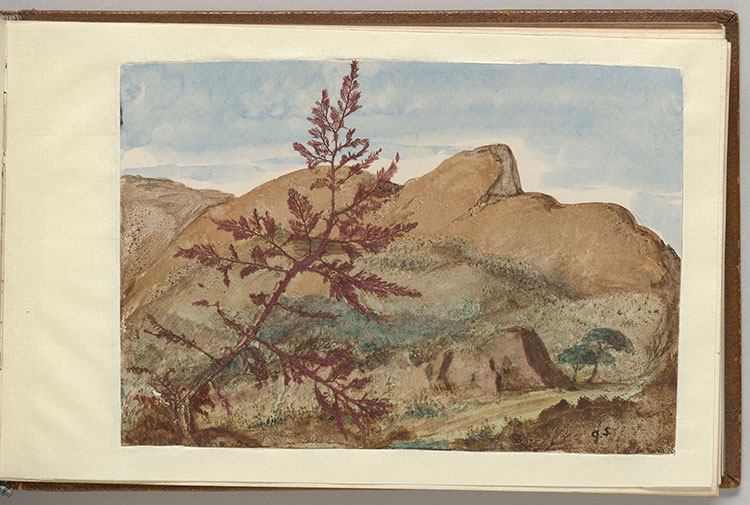
George Sand--the masculine pen name adopted by the French woman Amantine Lucile Aurore Dupin de Francueil (1804-1876)--was one of the most renowned European authors of the mid-nineteenth century. Her novels addressed issues of social class and the plight of the laborer, often couched within stories of love and marriage. She placed many of her characters in rural settings like her native Berry in central France. Off the page, Sand championed womenʼs rights and advocated for the working class, the poor, and a French republic. Highly independent, she dressed in menʼs clothing (without filing for the required permit) in order to get around Paris more easily, smoked cigars, and enjoyed several romantic relationships, including one with the composer Frédéric Chopin. Her network encompassed writers, musicians, and artists, such as Théodore Rousseau.
While it was previously thought that Sand experimented with watercolor only at the end of her life, a review published on 5 January1846 in the journal Le Constitutionnel reveals that her watercolors were known--and perhaps even exhibited--decades earlier. To produce her distinctive landscapes, she dripped pigment onto thick paper and pressed the surface with another sheet, which she had dampened. She then pulled the papers apart, creating a texture reminiscent of dense foliage, and transformed these haphazard spots into imagined scenes of forests, mountains, and lakes. Sand may also have used sponges to create the richly textured surfaces of these fantastic views. She referred to the results as “crushed” or “dendritic drawings”--evoking the effect of the finished works using the Greek word for “tree.” Sand sometimes pasted colorful vegetal matter on her drawings and the Morgan preserves several examples of this extremely rare use of collage by the author. The scale and texture of these organic elements add an almost surreal note of play to the scenes, reminding us that they are creative experiments rather than studied landscapes.
Cohen, Karen B., former owner.
